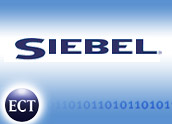
Ken Olson, founder of Digital Equipment Corporation, once said that the technology life-cycle goes through three phases — do it, do it right, and do it fast. Maybe that was true of mini-computers, but today I would amend it to something like, do it, lower the cost, and make it small. If you look at the software market that’s certainly where a lot of vendors and solutions are going. Take CRM, for example.
CRM has been around for a long time, and we could argue that the market reached its “do-it” stage when the first integrated suites came onto the market about five years ago. More recently, of course, the cost of CRM became dramatically lower when on-demand computing matured enough to make hosted CRM a reliable business tool. Today the leading edge of CRM is in the “make-it-small” phase.
Small is Beautiful, Really
A lot of people might think that with hosting, CRM achieved both low cost and “smallness,” and to an extent they are right. But the smallness of early hosting relied as much on a relative dearth of functionality as it did on ease of implementation and maintenance. Today’s hosted CRM is becoming as feature-rich and functional as its licensed counterpart. Small is evolving in CRM right now as more functionality, technology, and value are crammed into an average monthly user fee that fits comfortably into the definition of walking-around money.
So, what is small? Small doesn’t mean that something is meant only for small companies. In this context, small is the difference between transistors and vacuum tubes, and later, between transistors and integrated circuits. Small is Walkman and iPod and those itty-bitty speakers that turn your car into a sound studio. Small means whole product as well as clean and intuitive interfaces: solutions packed with value and features and the service and support you might need to get it right.
Small is where you want to be. Fool yourself into thinking that your job is over when you get to the low-cost stage and you will attract a lot of competition as you race to the bottom. And the only thing you’ll ever be is cheap.
Siebel Communications Platform
That’s why Siebel’s recently announced version 7 of its on-demand call and contact center is so important. With version 7, Siebel has gone from the low-cost stage to the “make-it-small” phase and opened some room between itself and the competition.
If part of making an offering small means embedding a lot of value into a small package that is compelling to small and medium businesses as well as enterprises, then Siebel’s OnDemand Call Center certainly passes the test. Rather than offering some competent software and the API linkages to integrate the necessary third-party gear to make a whole solution, Siebel takes a more customer-friendly approach.
Included in the monthly fee is the whole alphabet soup of telecommunications infrastructure that makes software people’s eyes glaze over, including PBX, IVR, ACD, CTI and PSTN and VoIP.
Siebel has brought to market an appealing combination of functionality and service that it calls a complete customer communications platform, pre-built with all the moving parts like voice, e-mail and Web support functions that can make call center deployment so expensive and time consuming if you try to do it yourself.
By delivering this infrastructure in a pre-built hosted solution, Siebel eliminates the costs associated with potentially hundreds of thousands of dollars worth of equipment and integration services. The result is a truly on-demand way to set up call center agents practically anywhere and in almost no time.
Next Challenges
On the face of it, an on-demand call center capability might sound counter-intuitive. After all, aren’t call centers defined as places where lots of agents work to reach out to customers with products and services? That’s certainly true, but we discovered a while ago that a geographic area will only contain so many people who want to do the job and have the right skills and accents. After that you need to go elsewhere, and that can be expensive.
The on-demand call center is a good solution because it enables call centers to deliver the tools necessary wherever there are competent people who want to do the job and who like to work at home or in a satellite location. Big companies with seasonal fluctuations in demand as well as small companies setting up their first call centers find that this kind of solution is efficient and cost-effective. And the agents who use these remote services enjoy the relative freedom and lower stress that comes with working at home and avoiding commuting.
By delivering a pre-integrated on-demand call center solution, Siebel has contributed an important advance in call-center technology, but the game is a long way from over. While this is an important step in the right direction for a lot of reasons, the next challenge will be to ensure there is a good layer of management functionality to monitor employee performance and measure call quality as well as ways to push education to the remote user.
Much of this functionality exists but readers of this column know that there is still work to be done in enabling cross-selling and up-selling best practices. Maybe version 8 will take care of that.
Denis Pombriant is a well known thought leader in CRM and the founder and managing principal of the Beagle Research Group, a CRM market research firm and consultancy. Pombriant’s latest report, CRM WizKids: Taking CRM to the Next Level, identifies emerging CRM leaders and their innovative technologies. In 2003, CRM Magazine named Pombriant one of the most influential executives in the CRM industry. Pombriant is currently working on a book to be published next year. He can be reached at [email protected]
























































